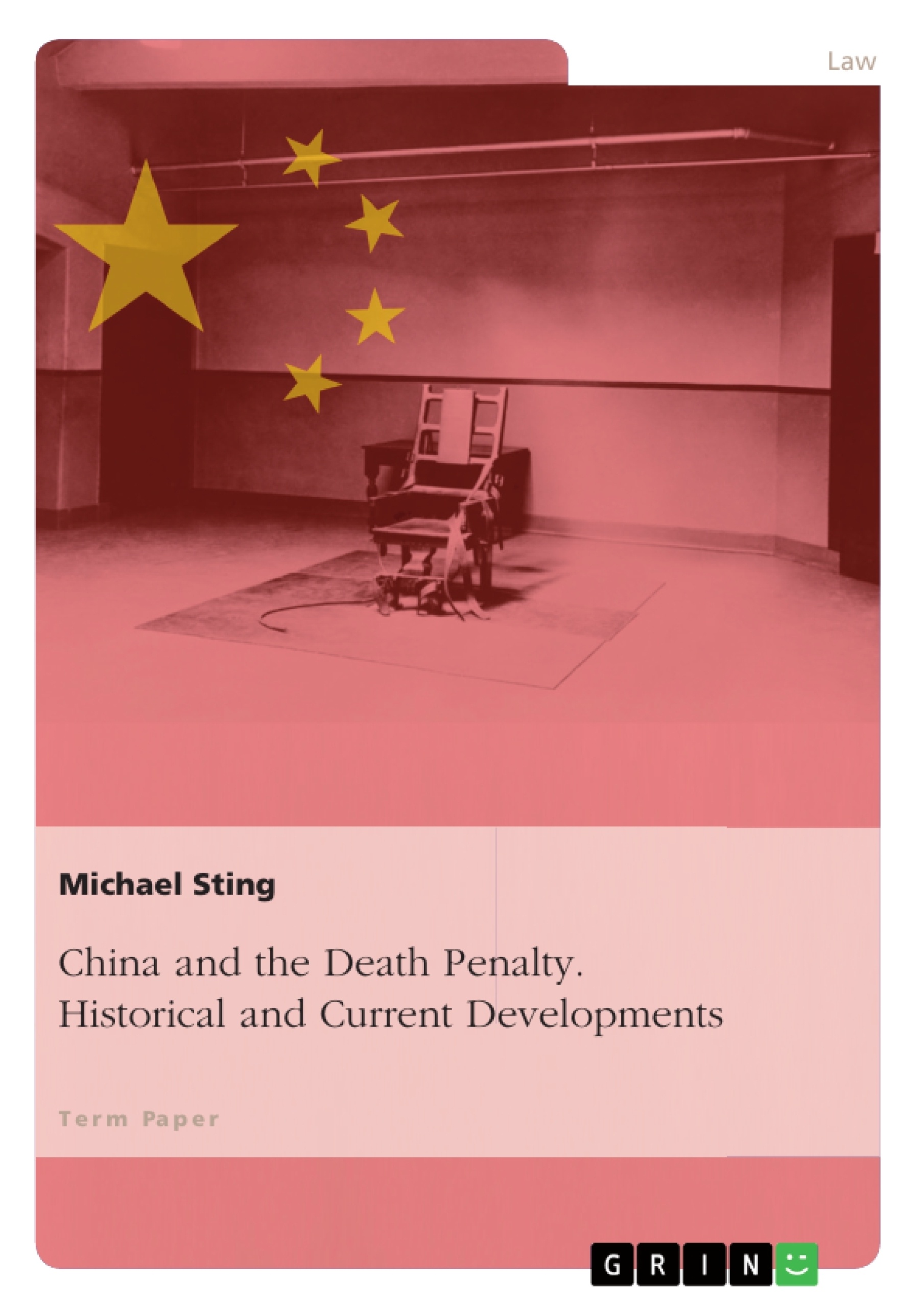“Kill fewer, kill carefully.” According to the wishes of the Chinese Politburo, these two political guidelines are to be implemented in the future in order to simultaneously maintain harmony and order in China.
As with any passed laws – independent of country or government –, two questions arise here:
1. What did the prior evolution look like and can obligatory reform prevail?
2. Which competences are the judiciary’s responsibility and is there a guarantee that secure monitoring of law enforcement will be carried out?
I will pursue these questions in this paper. For this purpose, I will start by addressing the term “death penalty”, the legal provisions in China as well as its evolution with a particular focus on the “Strike Hard” Campaign and the decentralization process of the courts, which substantially contributed to the need for reform.
Furthermore, I will analyze the reformation of the Supreme People’s Court and assess the current state of the political guidelines being strived for and their actual executive implementation.
The conclusion should allow for an assessment of the reformation measures, if they have indeed been successful, if there is a need to catch up or if they failed entirely.
Inhaltsverzeichnis (Table of Contents)
- Introduction
- The Death Penalty in China and its Historical Evolution
- Its Definition and Legal Foundation
- The Evolution of the Death Penalty in China
- The Strike Hard Campaign
- The Reformation of the Supreme People's Court
- Returning to Centralization
- Current Developments
- Conclusion
Zielsetzung und Themenschwerpunkte (Objectives and Key Themes)
This article examines the evolution and current state of the death penalty in China, focusing on the political guidelines aimed at reducing its application while maintaining societal order. It explores the historical development of the death penalty, analyzing the impact of the "Strike Hard" Campaign and the decentralization of the judiciary. Additionally, it analyzes the reformation efforts of the Supreme People's Court and evaluates the success of these measures.
- The historical evolution of the death penalty in China
- The impact of the "Strike Hard" Campaign
- The role of the Supreme People's Court in reforming the death penalty system
- The balance between maintaining order and reducing the use of the death penalty
- The effectiveness of the reformation measures
Zusammenfassung der Kapitel (Chapter Summaries)
- Introduction: This chapter introduces the article's focus on the death penalty in China, highlighting the political guidelines of "kill fewer, kill carefully" and the questions surrounding its implementation. It outlines the article's structure, which includes examining the definition and legal foundation of the death penalty, its historical evolution, and the reformation efforts of the Supreme People's Court.
- The Death Penalty in China and its Historical Evolution: This chapter defines the death penalty and its legal foundation in China, citing relevant legal provisions. It then explores the historical evolution of the death penalty, highlighting its use during different periods, particularly the "Strike Hard" Campaign and the decentralization of the courts.
- The Reformation of the Supreme People's Court: This chapter analyzes the Supreme People's Court's efforts to reform the death penalty system. It examines the shift back to centralization and the current developments in implementing the political guidelines.
Schlüsselwörter (Keywords)
The key themes and concepts explored in this article include the death penalty, Chinese law, criminal justice, judicial reform, Supreme People's Court, "Strike Hard" Campaign, decentralization, and the political guidelines of "kill fewer, kill carefully." It delves into the historical evolution of the death penalty in China and assesses the effectiveness of current reformation measures aimed at reducing its application while maintaining order.
- Citar trabajo
- Michael Sting (Autor), 2015, China and the Death Penalty. Historical and Current Developments, Múnich, GRIN Verlag, https://www.grin.com/document/316010



